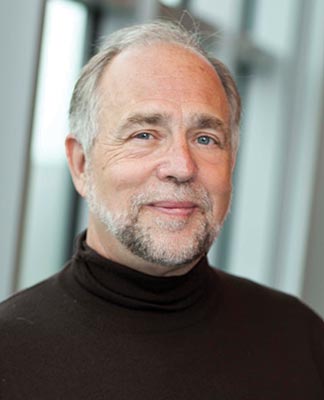Clarence Schutt Transfers to Emeritus Status

Clarence Schutt, a Professor of Chemistry, retires this summer after 30 years of teaching and conducting research at Princeton University, effective July 1.
Schutt received his B.S. in physics at the University of Michigan in 1967 then went on to obtain an M.S. in physics at Michigan State University. He did his graduate studies at Harvard University in the Department of Biochemistry & Molecular Biology. Under the direction of Professor Stephen C. Harrison, Schutt’s thesis work was the first to reveal the structure of an intact virus using X-ray crystallography. Published in Nature, this landmark study depended on methods developed by Schutt that are at the core of all modern crystallographic data collection programs used for large biological structures.
Upon completing his Ph.D. in 1976, Schutt relocated to Cambridge, England to conduct postdoctoral research at the Medical Research Council Laboratory of Molecular Biology, which is considered the birthplace of molecular biology. His research advisors were the late Dr. Hugh Huxley and Nobel laureate Sir Aaron Klug, both of whom were eminent structural biologists. During his time in Cambridge, Schutt studied the higher order structure structures of chromatin, and actin, a key protein in the microfilament system responsible for muscle movement.
After spending almost a decade at the Medical Research Council Laboratory, Schutt returned to the United States in 1985 with his wife and four children to accept an Associate Professorship at Princeton University. At the Department of Chemistry, a major theme of Schutt’s research centered on investigating how nature converts chemical energy into movement. In 1993, his laboratory solved the structure of crystalline profilin-beta-actin to 2.55Å resolution by X-ray crystallography. Published in Nature, the results were co-authored by long-time collaborator Uno Lindberg, a Professor of Cell Biology at Stockholm University. Their collaboration spanned almost 30 years with Lindberg spending about a month every year visiting Princeton, and frequent visits by Schutt to Stockholm University, which awarded him an honorary doctorate in 1988. Using biophysical techniques such as X-ray crystallography and selected-site mutagenesis, Schutt continued to examine the structure and dynamics of actin and the family of proteins that bind it.
His colleagues described Schutt as extremely positive and funny, which made him a popular teacher. He was the first senior faculty member to teach a freshman seminar, offering a course he named “architectonics,” which referred to theories about structural change under tension in science and art. Schutt said he was most proud of his graduate students’ scientific accomplishments, many of whom have gone on to become academic professors and leaders in industry, but also of their personal commitments to leading fulfilling family lives.
After his son Alex was diagnosed with autism, Schutt wrote insightful and compassionate posts about his family’s journey as part of an effort to raise public awareness and funding for research. Philanthropy became very important to Schutt, who was a founding Trustee and Chairman of the Board of the National Alliance for Autism Research (NAAR), now part of Autism Speaks, the largest public fundraising and advocacy organization in the world. At Princeton, he taught courses on the structural biology of neuro-developmental disorders such as autism, and on public policy relating to the discovery and licensing of treatments by the pharmaceutical industry (in the Woodrow Wilson School). After retiring from Princeton, Schutt will continue as the Director and Chief Scientific Officer of the Nancy Lurie Marks Family Foundation (Wellesley, MA), one of the largest private research foundations committed to helping autistic people lead rewarding lives.
